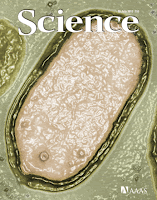Last thursday, the National Weather
Service (NWS) brought online its two new “clone” IBM
supercomputers, Tide and Gyre, for operational weather forecasting.
The machines are the workhorses of the NWS National Centers for
Environmental Prediction (NCEP)'s Weather and Climate Operational
Supercomputing System (WCOSS). The two identical supercomputers are
located in different places (primary machine at Reston, VA; backup at
Orlando, FL).
Patrick Thibodeau's write-up at
Computerworld seems to have led media coverage of the event.
He refers to last year's Hurricane Sandy, which engendered “a
belief that the European Center for Medium-Range Weather Forecasts
(ECMWF) had a better storm track model further out. Criticism over
the U.S. forecasting ability has followed post Sandy.” Bringing
the new computers online, replacing the previously used pair of IBM
supercomputers, is a step in the right direction. (A planned phase
II of the transition will lead to further improvements.) However,
the U.S. will also need to maintain investments in Earth-observing
weather satellites, as noted (for instance) by Stephen Stirling of
the New Jersey Star Ledger.
The NWS computers do work of national
importance, and it is reassuring to read about the
verification and validation of the systems prior to going live.
Further details can be found in this post by Steve Tracton at the
Washington Post. He describes sensitive dependence on initial
conditions, manifested as a divergence in forecasts from the same
forecast model run on both the old and new supercomputers. This
phenomenon, as he points out, is closely related to the path-breaking
work on chaos in meteorology and computational science by the late
Edward N. Lorenz (1963, 1989).
References
E.N. Lorenz, 1963: Deterministic
nonperiodic flow. J. Atmos. Sci., 20: 130-141.
E. N. Lorenz, 1989: Computational chaos -- a prelude to computational instability. Physica D, 35: 299-317.
E. N. Lorenz, 1989: Computational chaos -- a prelude to computational instability. Physica D, 35: 299-317.


